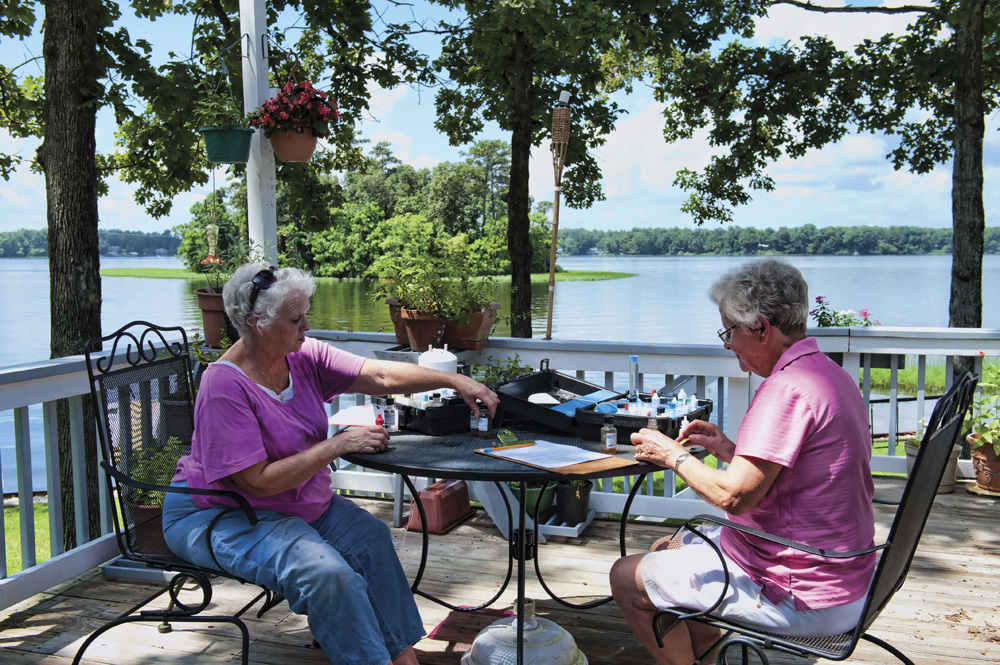Testing the Waters
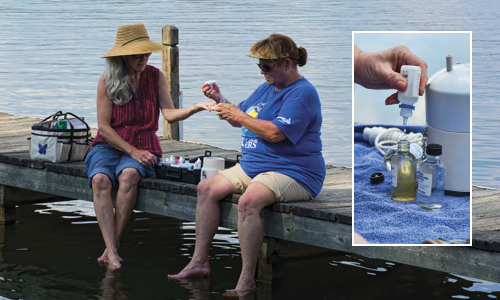
On a steamy end-of-summer day, the ultimate science experiment is underway on Lake Jordan and Lake Mitchell — all to ensure the health of the water.
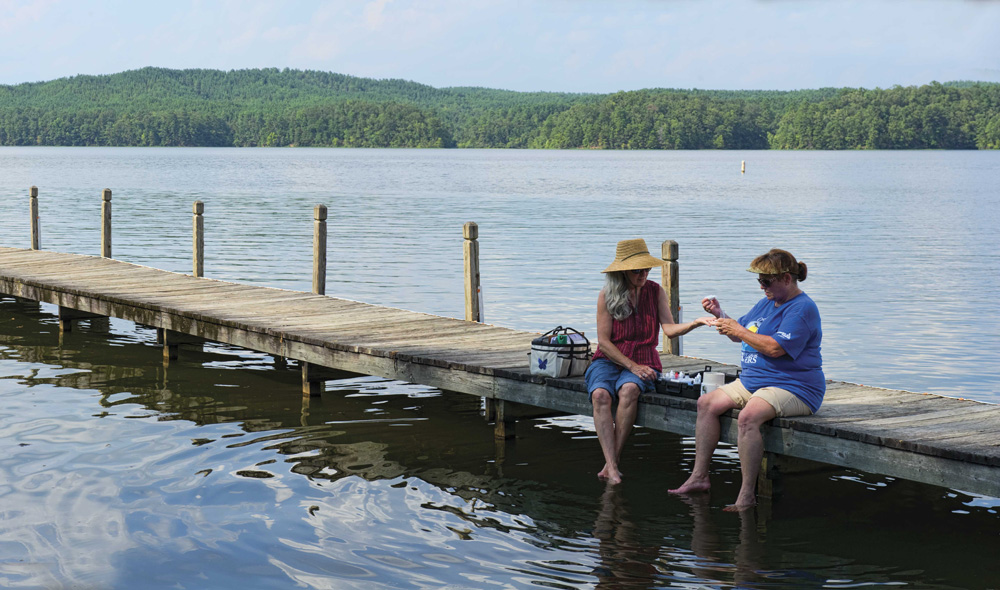
Volunteer Ann Hill plops onto her stomach and extends her hand over the dock into Lake Jordan to collect just enough water for a pH test. Will the results be stable or skewed? Judy May wades into another area, lowering her arms elbow-deep to fill up vials for an oxygen check. Will the levels be healthy or wanting? On down the lake, Don Dudley treats his own samples with chemicals before tucking the Petri dishes into his homemade incubator. Will they show clean water or any dreaded E. coli?
On neighboring Lake Mitchell, Patsy Wideman and Rebecca Beaty prepare to conduct their multi-step water regimen for their 99th and 101st months, respectively. Will there be new findings? In all, the reliable testers report air and water temperature, pH, alkalinity, hardness, turbidity/water clarity and dissolved oxygen.
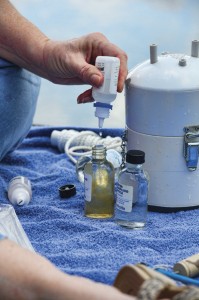
These volunteer water monitors, residents on Alabama Power lakes, tote official black testing kits — filled with bottles of chemicals, sterile droppers, glass vials and more — to designated spots once a month. The process takes about an hour once they get the hang of it, and each monitor is as serious and dedicated as a white-coat scientist. But these are hardly scientists. They’re simply you-and-me people who want to do their part for the lakes they love, and for the generations to come.
“Last calendar year, we had about 341 people around the state testing water,” reports Rita Grub of Alabama Water Watch (AWW), the Auburn-based organization that trains water monitors and tracks the data. “The volunteers are so giving — they’re the reason I come to work. When they enter their information (online with an assigned ID number), we have programs that graph the results. Once entered, the data is there forever and can help us determine if the water is getting better or worse. It takes two to three years to establish a trend.”
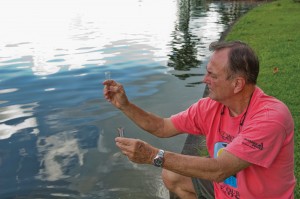 Most of today’s volunteers have been contributing long enough to establish the trends. More are joining their ranks each year, many through their Home Owner/Boat Owner (HOBO) groups, which often supply kits and chemicals. “This shows that we’re all working together,” says Beaty. “Alabama Power can’t do it alone, residents can’t do it alone, neither can Alabama Water Watch. It’s a good relationship.”
Most of today’s volunteers have been contributing long enough to establish the trends. More are joining their ranks each year, many through their Home Owner/Boat Owner (HOBO) groups, which often supply kits and chemicals. “This shows that we’re all working together,” says Beaty. “Alabama Power can’t do it alone, residents can’t do it alone, neither can Alabama Water Watch. It’s a good relationship.”
Angie Anderegg, engineer in Alabama Power’s Environmental Affairs, adds, “We very much appreciate the fact that these residents contribute their own time to conduct monthly water testing. Ultimately, we all care about the same thing on our lakes, and that’s the health of the water for recreation, residential and energy-producing purposes.
“We admire the fact that the volunteers don’t just live on these lakes, but want to be part of monitoring and protecting such a valuable resource,” she says. “We all benefit when people care.”
VOLUNTEER yourself
Interested, but have questions? We have answers, from current volunteers:
- Is testing difficult?
“If you know how to make a pan of brownies, it’s the same concept,” says Rita Grub of Alabama Water Watch. “Just put in some drops, mix them in a little bit, let sit for a designated time, record results, and post on our site. A lot of it is determining color changes.” - Are there testing categories?
“You can learn to conduct bacteria testing, chemical testing or both,” Grub says. - How am I trained?
“Five-hour workshops in water chemistry and three-hour classes in bacteria testing are conducted by AWW staff and citizen trainers around the state,” she says. “You can then adopt an existing testing site or set up your own (near your lake house is fine). We re-certify volunteers every two years to review testing techniques.” - Do I need to understand the results?
“We don’t have to know much about the science,” volunteer Patsy Wideman says. “What matters is that we’re very exacting in following the criteria in running tests and reporting results.” - What if I have problems?
“There’s always someone to ask for help,” says Judy May, who coordinates all water monitors on Lake Jordan. “You get more confident — and faster — as you go.” - Why do it?
“Cherishing your lake is not just looking from the porch,” Wideman says. “Love is an active verb. You cherish by doing something. It all adds up to the big picture and that’s great.” - How do I begin?
Go to Alabama Water Watch and click on Workshop Registration to find the training schedule. Or contact (888) 844-4785, info@alabamawaterwatch.org.
